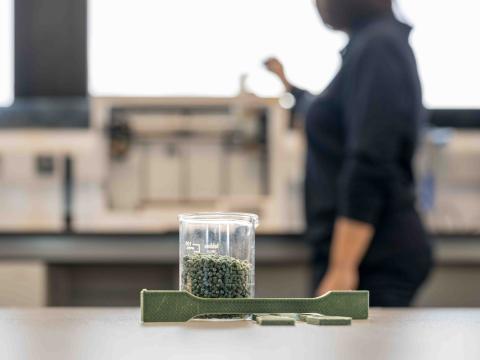ECOFAP project: tanned leather waste+3D printing=soles and heels
The ECOFAP project aims to make shoe soles and heels with a new 3D printing material made from tanned leather waste. This research project will help solve the problem of how to recycle leather scraps from the footwear manufacturing industry; they usually end up in a landfill...
The project is coordinated by AIMPLAS and involves Pikolinos, Evatalking and the Footwear Technology Centre of La Rioja. It is funded by the Spanish Ministry of Science, Innovation and Universities and NextGenerationEU. It aims to develop a new 3D printing material based on recycled natural leather for use in the fashion, textiles and footwear industry.
Specifically, the project recovers tanned leather waste from the footwear industry and uses it to create new materials for soles and heels using FDM (Fused Deposition Modeling) 3D printing. It is in line with circular economy principles along with reducing the industry’s environmental impact and carbon footprint.
The ECOFAP consortium wants to reduce the particle size of the leather scraps to 10 microns as this will make it possible to use the resulting material as a filament for 3D printing. The goal is to combine different percentages of micronized leather with various polymers whose mechanical properties make them suitable for footwear. Reducing the particle size is not easy as leather is made of elastic fibres (collagen).
- 3D printing applied to shoe manufacturing has considerable growth potential, and this industry is increasingly keen to promote recycling and reuse.
- It is estimated that footwear factories generate around 3 500 tonnes of leather scraps in the Valencian Community. Almost all of this could be recycled and used for applications in other industries, and that is what this project is aiming to do.

